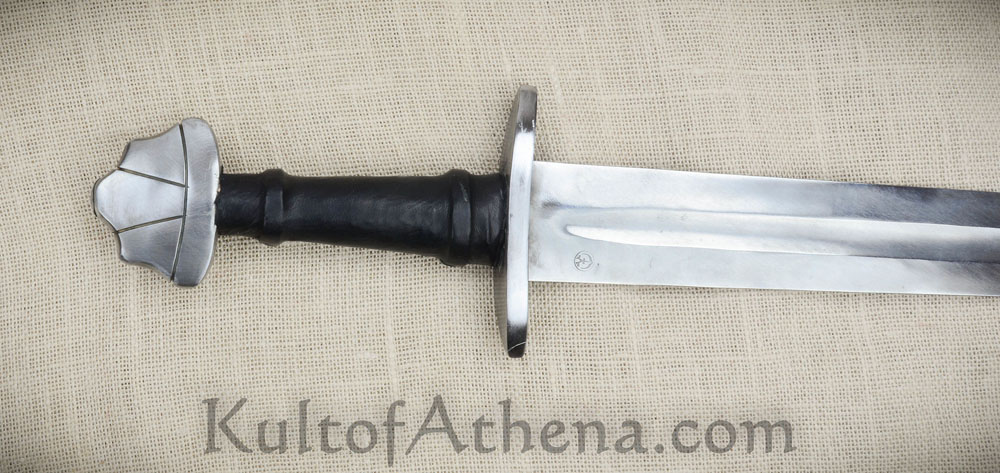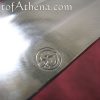In the world of the Vikings, the sword was not the most common weapon – that distinction went to the spear and axe. However, the sword was a particularly revered weapon, for the skill required in its forging was the apex of the blacksmiths art.
High quality iron was hard to come by in Scandinavia, and the smith would often smelt his iron from bog iron. These iron ore deposits are formed by concentrations of iron being washed out of mountains in streams, to gather as nodules of iron that can be harvested from the bog. Smelting required placing the bog iron ore into in a bloomery furnace with charcoal and heating it to 2000 – 2400 degrees Fahrenheit (1300 Celsius). The heat produced a reaction, melting the iron from the ore and infusing it with carbon. After hours of smelting, a bloom of misshapen, low-carbon iron could be removed. The bloom could be further infused with carbon, increasing its content and making it into steel that would be worked into a sword.
A good sword though needs to flex to absorb shock and then return true. It must also be hard and durable enough to hold an edge. This was very difficult to achieve at that the time with a single steel, so a common solution was to create a sword from more than one steel. Called pattern-welding, it involves twisting together two different bars of steel and welding them into a single piece with heat and hammer. This imparts a compromise of flex and durability to the sword.
Most metal goods needed by the Vikings could be made from plain, low-carbon iron or single steels. Pattern welding was needed for longer steel weapons because the stresses they would be put under would be more demanding than that required for a simple mallet, small knife or nail. This skill and investment in rare, high quality materials ensured that swords would be rare, expensive, and artfully executed tools of war. The bearing of a high quality sword was a loud statement about the great wealth and status of the man wielding it in the Viking world.
This Viking Sword was made in the Czech Republic. It has a blunt blade of high carbon steel tempered to 50-52 HRC. Intended for stage combat, the blade edges are thick and blunt. The crossguard and pommel are both welded to the sword for strength and durability. The sword tang is also peened to the pommel. The grip is wrapped in soft leather.
Please Note: The grip color and the type of leather grip wrap used on this sword can vary – grip colors can vary from brown to black. There may also be variations in hilt style or grip length.






















Reviews
There are no reviews yet.